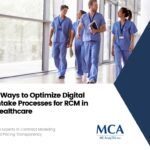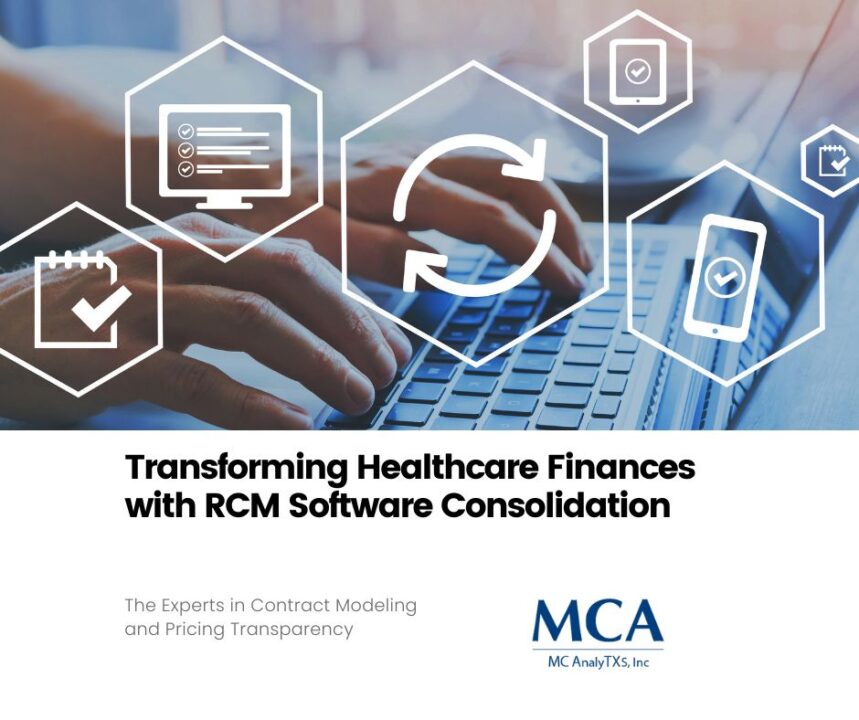
6 Ways to Optimize Digital Intake Processes for RCM in Healthcare
March 27, 2024
The Path to Profitability: Boosting EBITDA with Strategic Revenue Cycle Management
April 1, 2024In the complex world of healthcare management, every dollar can make a critical difference. Revenue Cycle Management (RCM) has always been vital to healthcare providers, but as the landscape continues to shift, the challenges of maximizing cash flow require more innovative solutions than mere cost-cutting. This isn’t just about balancing books—it’s about ensuring a sustainable financial future for institutions while maintaining high-quality patient care.
From leveraging technology to refining patient engagement strategies, the following breakdown will empower healthcare providers with detailed strategies to bolster RCM and ensure robust revenue recovery. We’ll look beyond traditional financial management, exploring methods that optimize billing, elevate patient interactions, and harness data for smarter decision-making.
Mastering the Mechanics of RCM
At its core, RCM in healthcare refers to the financial process that manages claims processing, payment, and revenue generation. The cycle begins when a patient schedules an appointment and culminates when all claims and patient responsibilities have been satisfied. This complex operational sequence is composed of critical stages, each demanding precision and coordination:
- Scheduling and Registration: Accurate patient data capture and timely scheduling are foundational to a healthy RCM.
- Charge Capture: The recording of services and items provided ensures no billable expenses are missed.
- Claim Submission: Efficient coding and claim submission speed up the reimbursement process.
- Insurance Follow-up: Timely pursuit of claims can dramatically impact cash flow.
- Patient Payments: Successful collection hinges on transparent communication and efficient payment workflows.
In every one of these stages lies the potential for improvement. Failure to optimize any can lead to delayed or diminished revenue, compounding financial stress for providers.
The True Cost of Inefficiency and Non-Compliance
In today’s healthcare environment, inefficiencies in RCM can significantly impact an organization’s bottom line. Delays in claims submission, undercoding, and a lack of adherence to billing regulations not only impede cash flow but can also invite costly audits and penalties.
Healthcare providers shoulder an array of regulatory requirements, from the complex maze of Medicare and Medicaid rules to the growing list of payer-specific policies. Non-compliance can result in severe financial repercussions, jeopardizing not only profitability but also the ability to maintain competitive services and reinvest in quality care.
Uncovering and Addressing Common RCM Pitfalls
Understanding where RCM typically falters is crucial to setting a successful recovery strategy. The following are areas where mistakes and inefficiencies are often found:
- Coding Errors: Missteps in the coding process can lead to claim denials or underpayment.
- Delayed Documentation: If not promptly documented, services could be overlooked in billing, leading to lost revenue.
- Ineffective Follow-Up: Unresolved or delayed insurance payments can create aging accounts receivables, which are less likely to be collected.
- Outdated Payer Rules: Staying current with frequently changing payer guidelines is crucial to avoiding costly mistakes.
Addressing these common pitfalls requires a holistic approach that combines process improvement, staff training, and advanced technology.
Strategies for Revenue Cycle Resilience
In the face of these challenges, healthcare providers are developing a range of strategies to enhance their RCM and ensure a robust financial future. It’s not just about the money—it’s about serving patients better through efficient, seamless financial processes.
Optimize Billing and Coding
The billing and coding process is the heart of RCM. It’s where services are translated into claims and, ultimately, revenue. To enhance this core function, providers should consider:
- Regular Audits and Training: Instituting a culture of ongoing evaluation and improvement, through regular billing and coding audits, and staff training programs.
- Investing in Technology: Implementing advanced coding software and tools to improve accuracy and speed.
- Ensuring Full Transparency: Clear communication within the billing department and with healthcare providers can reduce errors and ensure accurate charge capture.
Amplify Patient Engagement
Patients are an integral part of the RCM process. Engaged patients are more likely to pay bills promptly and to work with providers to resolve any payment issues.
- Enhanced Communication Systems: Leveraging omnichannel communication systems to keep patients informed about their bill status and payment options.
- Financial Counseling: Providing support and education to help patients understand their financial responsibilities and options for covering costs.
- Tailored Payment Plans: Offering personalized payment options can increase the likelihood of full and timely payments.
Harness the Power of Technology
Technology is a game-changer in RCM, offering solutions that automate and streamline traditionally manual processes, enhancing efficiency and accuracy.
- EMR and EHR Integration: Ensuring seamless data flow between Electronic Medical Records (EMR) and RCM systems.
- Automated Processes: Implementing systems that can automatically flag and manage issues, such as coding errors or unpaid claims.
- AR Management Software: Utilizing specialized software to handle accounts receivable and follow up on outstanding payments with payers and patients.
Data-Driven Decision Making
Data analytics provides insights that can drive informed decisions in RCM. By understanding the numbers, providers can make better choices to optimize their financial performance.
- Key Metric Tracking: Monitoring key performance indicators (KPIs) such as days in A/R, denial rates, and collection percentages to identify areas for improvement.
- Predictive Analytics: Anticipating trends and future challenges enables proactive management of the revenue cycle.
- Continuous Improvement: Using data to establish a cycle of continuous process improvement, adapting RCM strategies as needed.
Conclusion and Call to Action
Healthcare providers must recognize that revenue recovery is not just about fleeting financial band-aids. It requires a sustained and multifaceted approach that prioritizes operational efficiency, cutting-edge technology, and a patient-centric mindset.
By integrating the strategies outlined in this blog post and continually evaluating and adjusting their RCM processes, providers can not only recover lost revenue but also fortify their financial health for an uncertain future. It’s time to act. Prioritize your RCM investment today for a prosperous tomorrow.
If you’re a healthcare provider who’s serious about enhancing your RCM processes, now is the moment to engage with your team and stakeholders. Begin with an audit of your current RCM practices, identify weak points, and forge ahead with strategic improvements. Remember, in healthcare, a robust revenue management strategy is the foundation of quality care.





